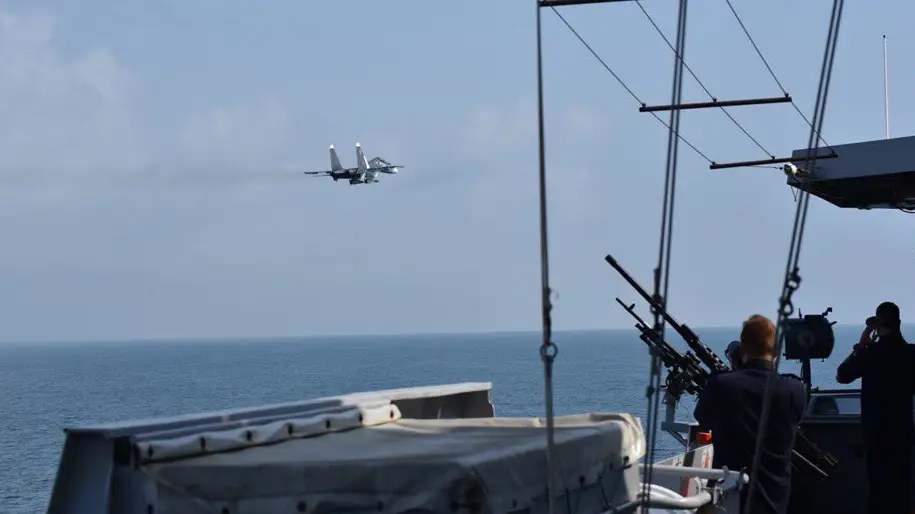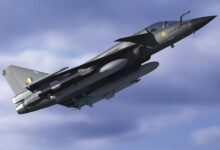Russian Su-30 Fighter Aircraft Are Equipped With X-31 Supersonic Missiles; Turkey Tests Its Indigenous Air-To-Air Missile

- The Kh-31P can fly at great altitudes and attain speeds of up to Mach 3.5. The sea-skimming Kh-31A is still capable of 2.5 mph travel.
- According to the Daily Sabah, Turkey has joined a small group of countries that have "air-to-air missile technology with Gökdoan and within visible range air-to-air missiles (WVRAAM) with Bozdoan."
According to the report, these missiles are very effective in the current conflict. According to the report, which cited sources, “the Black Sea Fleet is employing X-31 guided missiles known in the West as Krypton on its Su-30SM fighters.”
Up to that point, no public reports of airstrikes with Su-30SM armed with X-31 missiles had been made. However, TASS has not yet heard back from anyone in authority.
The Russian air-to-surface missile known as the X-31 or Kh-31 is launched from an aeroplane and is also referred to by NATO as the AS-17 Krypton. It was the first Russian supersonic anti-ship missile that could be fired from a tactical aircraft and has a top speed of Mach 3.5. The missile was created by Zvezda Design Bureau.
The Soviet Union began utilising the Kh-31 in service in 1988 after the first test firing took place in 1982. The Kh-31P, the first anti-radiation variant, and the Kh-31A, the second anti-ship variant, both made their maiden appearances in public in 1991.
The Royal Netherlands Navy frigate HNLMS Evertsen was the target of fake attacks by Su-30SM aircraft armed with Kh-31 missiles in the Black Sea, according to the Dutch Ministry of Defense at the end of June.
Photos released by the Dutch MOD show a Russian Naval Aviation Su-30SM flying low and near to Zr. Ms. Evertsen. At least one Russian aircraft appears to be carrying two Kh-31 missiles.
The rocket-ramjet propulsion system that the Kh-31s are equipped with enables them to maintain supersonic speeds. By accelerating the weapon with a rocket in the back, the air-breathing ramjet can seize control of it.
The Kh-31P can fly at great altitudes and attain speeds of up to Mach 3.5. The sea-skimming Kh-31A is still capable of 2.5 mph travel.
According to Rosoboronexport, the missile is compatible with the MiG-29K, MiG-29M, MiG-29SMT, MiG-29UBT, MiG-31, Su-24M, Su-25T, Su-30MK, and Su-35 aircraft.
The missiles employ mid-course radar guidance and terminal homing. The Kh-31A is equipped with the jam-resistant ARGSN-31 active radar guiding system, which can tell the target apart from a sizable, homogeneous group.
A passive radar guiding system with a broad frequency range is employed by the Kh-31P. Its seeker is capable of working in a variety of homing modes, such as automatic search and external control modes. If the missile comes into contact with enemy radar, it can perform an evasive 10-g pull-up manoeuvre.
Turkey Tests Its Homegrown Air-To-Air Missile
Turkey is making steady progress in developing its indigenous military sector. Over the past few years, the nation’s defence and aviation companies have made considerable R&D, manufacturing, and export breakthroughs.
Turkey successfully tested its domestic beyond visual range air-to-air missile (BVRAAM), Gökdoan, according to an announcement made by Ismail Demir, the chairman of the Presidency of Defense Industries (SSB), on July 10.
As part of the Göktu project, the Defense Industries Research and Development Institute (SAGE) of the Scientific and Technological Research Council of Turkey (TÜBTAK) is developing this missile.
1️⃣ GÖKDOĞAN görülmeyeni de vuracak!
GÖKTUĞ Projemiz kapsamında testleri süren milli hava-hava füzelerimizden #GÖKDOĞAN Görüş Ötesi Füzemiz, radar arayıcı başlıkla atışını gerçekleştirdi ve önemli bir aşama daha tamamlandı. 🎯
➡️ @SageTubitak pic.twitter.com/GXvM4LPV8a
— Ismail Demir (@IsmailDemirSSB) July 10, 2022
— Ismail Demir (@IsmailDemirSSB) July 10, 2022
He added that the Turkish Armed Forces would receive the Gökdoğan and Bozdoğan missiles by the end of the year. He lauded it as a holiday gift to the nation. Bozdoğan is an air-to-air in-sight missile that Turkey tested in April 2021, as previously reported by the EurAsian Times.
Turkey has joined a select group of nations that possess “air-to-air missile technology with Gökdoğan and within visual range air-to-air missiles (WVRAAM) with Bozdoğan,” according to the Daily Sabah.
“Gökdoan will strike the undetectable! One of our country’s air-to-air missiles, the Gökdoan Beyond Vision Missile, was fired with a radar seeker as part of the Göktu project, marking the completion of a crucial phase, Demir tweeted.
By the end of the year, he continued, the Gökdoan and Bozdoan missiles would be delivered to the Turkish Armed Forces. As a nation’s holiday present, he praised it. The EurAsian Times earlier stated that Turkey tested the air-to-air in-sight Bozdoan missile in April 2021.
According to the Daily Sabah, Turkey has joined a small group of countries that have “air-to-air missile technology with Gökdoan and within visible range air-to-air missiles (WVRAAM) with Bozdoan.”
SAGE started creating air-to-air missiles in 2013. While Gökdoan is being developed as a short-range, highly manoeuvrable infrared seeker missile, Bozdoan is being designed as an active, long-range radar seeker missile.
Both missiles carried out ballistic launches from the ground after being unveiled at the International Defense Industry Fair (IDEF) in May 2017. In these tests, the efficiency of the rocket engines and the capability of the weapons to demolish targets without guidance were assessed.
For optimum safety and dependability, both missiles are equipped with high thrust-low smoke solid-fuel technology, a fully electronic rocket engine, dependable and safe start and ignite systems, and a continuous fuse.
Turkey’s developing defence sector is playing a vital role in the country’s ambitions to become a prominent supplier of military goods.







Facebook Comments